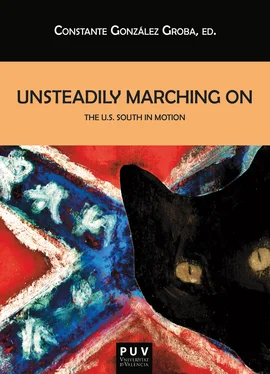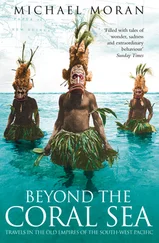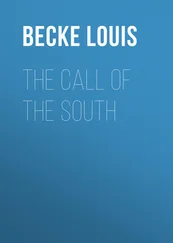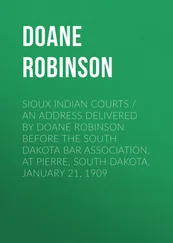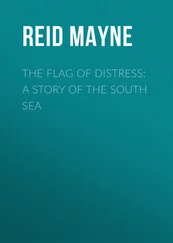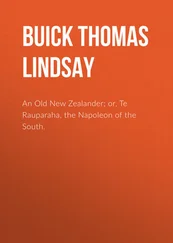5 Another element reminiscent of Emerson’s theories: “There is no country as extensive as a thought” (qtd. in Jarvis 1). The journey begins in the mind of the individual before it materializes into space.
6 Simone Vauthier has analyzed this issue at length, showing that “the novel is partly the story of [Will’s] acceptance of himself as a subject through the free use of his name” (80).
7 Percy defines this concept in “The Man on the Train”: “rotation is the quest for the new as the new, the reposing of all hope in what may lie around the bend, a mode of experience which is much the same in the reading as in the experiencing” ( The Message 86).
8 “une vie où je pourrais me souvenir de celle-ci” (Camus 181).
9 “Je n’ai pas vraiment de dedans” (Camus 37).
Leaving New York: The Post-9/11 South
in Reynolds Price and Jay McInerney
Thomas Ærvold Bjerre
Last year marked the tenth anniversary for the 9/11 terrorist attacks. Since the first so-called 9/11 novels came out in 2004, a steady stream of novels dealing with the attacks and their ramifications have been published. By now, enough novels have appeared to form a subgenre of 9/11 literature; novels that contribute to the way Americans, the way we all, perceive and think about 9/11. The list of American writers is comprised of both old and young, of well-established, canonical writers—like John Updike, Reynolds Price, and Don DeLillo, of up-and-coming writers like Nick McDonnell, Jonathan Safran Foer and Ken Kalfus, and those in-between, such as Lynne Sharon Schwartz, Andre Dubus III, and Jay McInerney. The majority of the novelists who have taken on 9/11 in fiction are themselves New Yorkers.
When it comes to the southern literary response to the terrorist attacks and their aftermath, Barry Hannah seemed to sum up the general tendency among southern writers: In his short story “Sick Soldier at Your Door,” the narrator interrupts his story to state: “I’m not going to say a damned thing about 9/11, by the way. I think the innocent dead will appreciate that. I was at Sewanee once when this academic Northeastern nit read a poem about 9/11 in 2006. I was in the front row .... It was all I could do not to race over and throttle this man” (29).
The refusal to respond to the terrorist attacks through art mirrors some of the initial responses from other writers in the immediate aftermath of 9/11. “After a couple of hours at their desks, on September 12, 2001, all the writers on earth were reluctantly considering a change of occupation,” British author Martin Amis wrote in an article in The Guardian . “A novel,” he continued, “is politely known as a work of the imagination; and the imagination, that day, was of course fully commandeered, and to no purpose …. The so-called work in progress had been reduced, overnight, to a blue streak of pitiable babble” (Amis). His view was countered by Robert McCrum, in his September 23, 2001 article in The Observer titled “The need for novelists.” McCrum pointed to the paradox that “it’s the imaginative writers who have provided the most trustworthy response to the dreadful irruption of horrifying reality…” and alluded to “contemporary masters” like Ian McEwan and Paul Auster, “who have come up with the words of comfort and clarity we crave in the midst of shock and desolation” (18). In his famous essay, “In the Ruins of the Future,” Don DeLillo also argues that the writer’s role is “to give memory, tenderness, and meaning to all that howling space” (39).
Seeing how southern writers have a long tradition of dealing with the nation’s, and their region’s traumatic history, Barry Hannah’s aggressive refusal to engage artistically in 9/11 is somewhat surprising. Furthermore, southern writers, with Hannah as a prime example, have often explored southerners’ culture of honor. According to Fred Slocum, “the ‘culture of honor,’ commonly found among native-born white (especially male) Southerners, mandates that perceived challenges or insults never go unanswered or unpunished, lest the challenged party lose face in the eyes of the peers” (1). Slocum construes the 9/11 attacks as “a colossal national insult ,” and argues that the Bush administration’s “aggressive, accept-no-boundaries responses... are virtually perfectly consistent with the Southern ‘culture of honor’ value system” (1). Certainly, popular culture has seen a wide variety of revenge narratives, from Toby Keith’s jingoistic song “Courtesy of the Red, White, and Blue” to Brian Trenchard Smith’s film DC 9/11: Time of Crisis .
But it seems that the national insult has not stirred up southern writers. Perhaps the longstanding southern mistrust of New York City plays a factor. As Marcel Arbeit has pointed out, southern writers from Faulkner to the present day have depicted New York in ambivalent terms. In Faulkner’s The Mansion New York is “a potential Sodom” (Arbeit 42), and despite his personal fascination with it, Faulkner “maligned the city as inhuman, asserting that no one seemed to be behind the windows” (Karl 792). Likewise, in Flannery O’Connor’s stories “The Geranium” and “Judgment Day” New York City is depicted as a sterile desert. And as Arbeit notes, some of Barry Hannah’s stories support the idea “that all people in New York are the same .... only appurtenances of the crowd there, deprived of their individual characteristics” (56).
There are several southern writers who have approached the post-9/11 era obliquely, such as Cormac McCarthy in The Road . Richard Gray reads The Road as a 9/11 novel, “not just in the obvious, literal sense, but to the extent that it takes the measure of that sense of crisis that has seemed to haunt the West, and the United States in particular, ever since the destruction of the World Trade Center.” And unlike the novels dealing directly with 9/11, “McCarthy’s alternative strategy in The Road ,” Gray asserts, “is not to domesticate but to defamiliarize” (39-40). Percival Everett’s The Water Cure reflects the dark side of the post-9/11 world of rendition, secret prisons and torture, such as waterboarding, as a response to harm done. And while Madison Smartt Bell does take on 9/11 in The Color of Night , it is done, not in a southern setting, but from the perspective of a woman living in Las Vegas.
But there are two 9/11 novels that actually leave New York for a while and go south: Reynolds Price’s The Good Priest’s Son (2005) and Jay McInerney’s The Good Life (2006). A shared tendency in these books is that of contrasting New York—the loud, crazy, traumatized metropolis—with the South, traditionally the image of laid-back tradition and old manners. For many, perhaps even more so for Yankees, the South is still synonymous with certain characteristics or values, perhaps more so than any other region in the country—”a greater attention to the past …. a religious sense, a closeness to nature, a great attention to and affection for place, a close attention to family...” (Hobson 3). These values become important in the two novels which momentarily retreat from the chaos of a wounded New York to the tranquility of the Southern countryside.
In many ways, these two novels follow the tendency of the other 9/11 novels: All of them focus on private, individual lives. Rather than trying to see the terrorist attacks in a larger, global perspective, they focus on how the events influenced the lives of a few American people. Often, the novelists use personal crises (divorces, traumas, etc.) to reflect the larger, national crisis. The crisis in McInerney’s narrative is, in Richard Gray’s words, “recuperated... assimilated into conventional structures and a series of tropes tending to reassure the reader that nothing has determinately altered” (51).
Читать дальше
